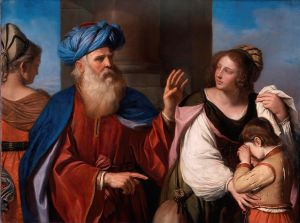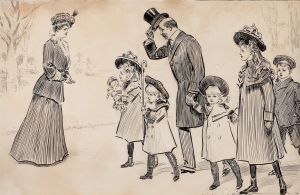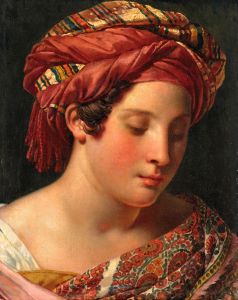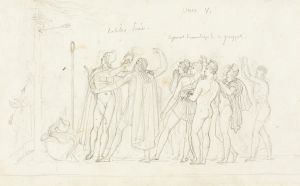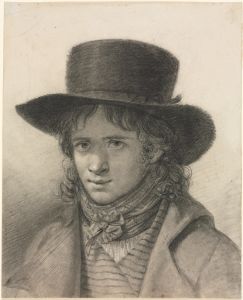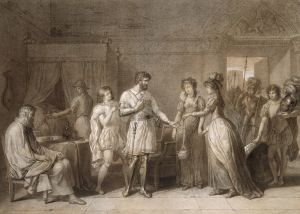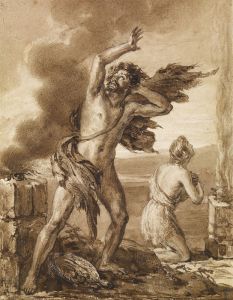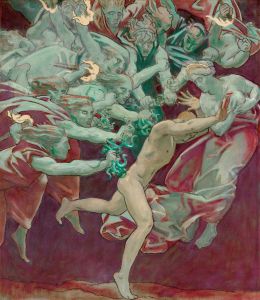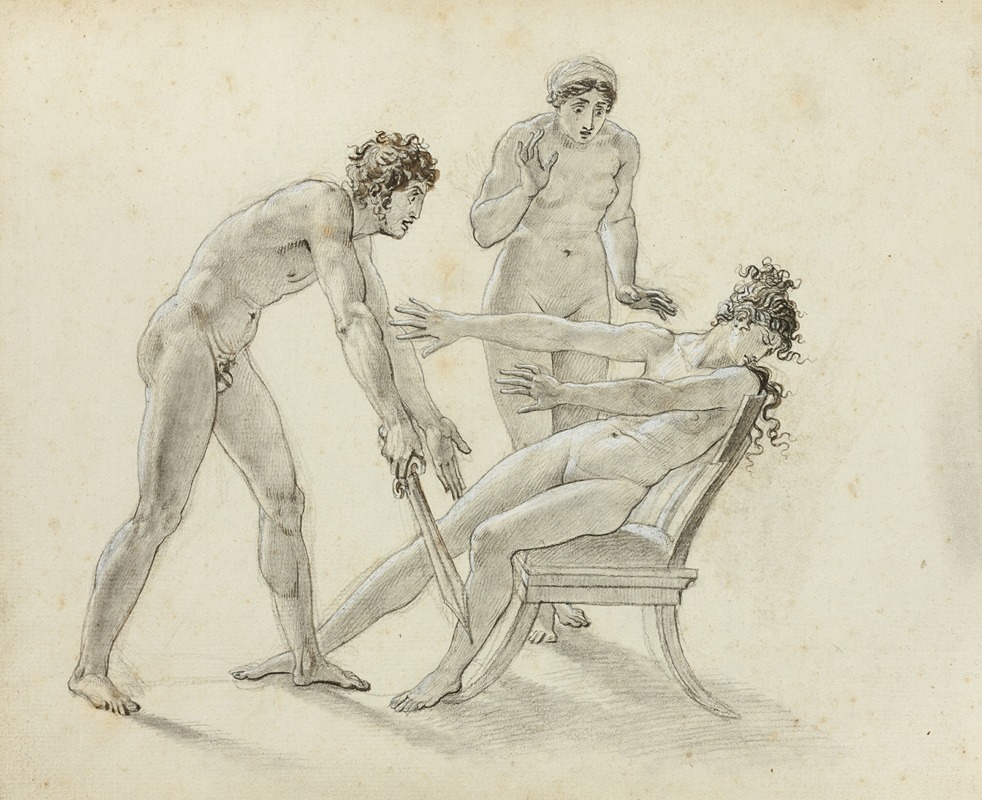
Hermione Rejecting Orestes
A hand-painted replica of Anne Louis Girodet-Trioson’s masterpiece Hermione Rejecting Orestes, meticulously crafted by professional artists to capture the true essence of the original. Each piece is created with museum-quality canvas and rare mineral pigments, carefully painted by experienced artists with delicate brushstrokes and rich, layered colors to perfectly recreate the texture of the original artwork. Unlike machine-printed reproductions, this hand-painted version brings the painting to life, infused with the artist’s emotions and skill in every stroke. Whether for personal collection or home decoration, it instantly elevates the artistic atmosphere of any space.
Hermione Rejecting Orestes is a painting created by the French artist Anne-Louis Girodet-Trioson in 1800. This work is a notable example of the Neoclassical style, which was prominent in European art during the late 18th and early 19th centuries. Girodet, a student of the renowned painter Jacques-Louis David, was known for his meticulous technique and his ability to convey dramatic narratives through his art.
The painting depicts a scene from Greek mythology, specifically from the story of Hermione, Orestes, and Pyrrhus, as recounted in classical literature and later dramatized in Jean Racine's 1674 tragedy Andromaque. In the narrative, Hermione, the daughter of Menelaus and Helen of Troy, is betrothed to Pyrrhus, the son of Achilles. However, Pyrrhus falls in love with Andromache, the widow of Hector, and rejects Hermione. In a fit of jealousy and despair, Hermione conspires with Orestes, who is in love with her, to murder Pyrrhus. The painting captures the moment when Hermione rejects Orestes, despite his devotion to her.
Girodet's composition is marked by its theatricality and emotional intensity. The figures are arranged in a dramatic tableau, with Hermione's gesture of rejection serving as the focal point of the scene. Her expression and posture convey a mix of anger, sorrow, and determination, while Orestes appears distraught and pleading. The artist's use of light and shadow enhances the emotional impact of the scene, highlighting the tension between the characters.
The painting reflects Girodet's mastery of anatomy and his ability to depict the human form with precision and grace. The drapery of the figures' clothing is rendered with great attention to detail, adding to the overall sense of realism and drama. The work also demonstrates Girodet's interest in exploring complex psychological themes, as it delves into the conflicting emotions of love, betrayal, and revenge.
Hermione Rejecting Orestes was well-received during its time and remains an important example of Neoclassical art. It showcases Girodet's skill as a storyteller and his ability to bring mythological and literary subjects to life through his painting. The work is currently housed in the Louvre Museum in Paris, where it continues to be admired for its artistic and historical significance.





